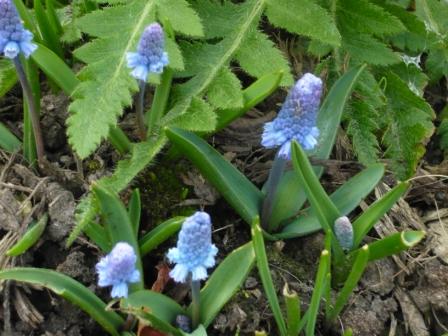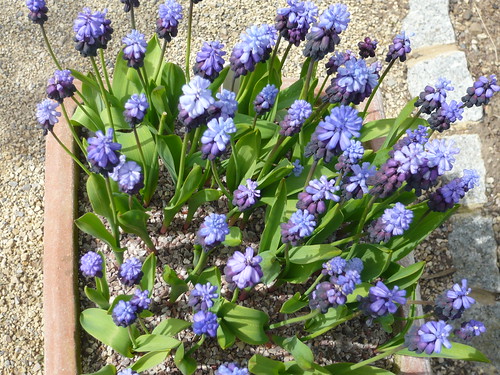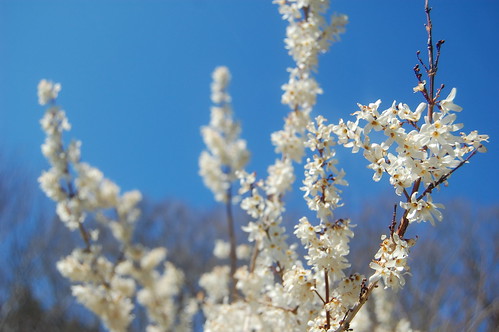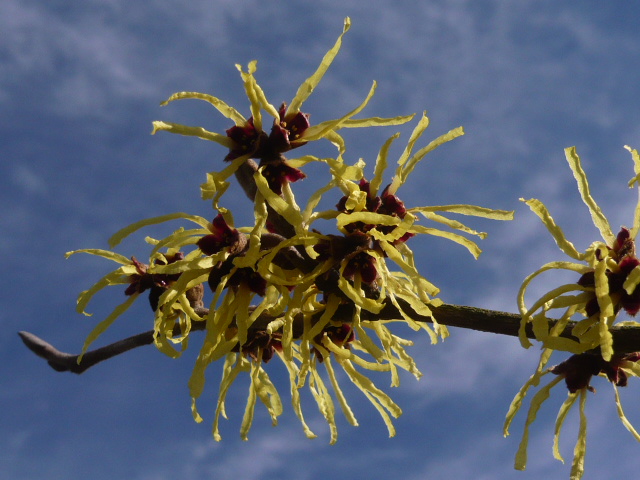Muscari A Blue Bulb for Spring
Muscari Species AKA Grape Hyacinth
Look out in other gardens for great bulbs to grow for next spring. This Grape Hyacinth called Muscari Azureum is a clear soft blue that is recommended for naturalising.
Muscari Valerie Finnis is also blue whilst most of the other species and varieties flower in shades of purple.
Muscari grow well in pots where the foliage can look interesting.
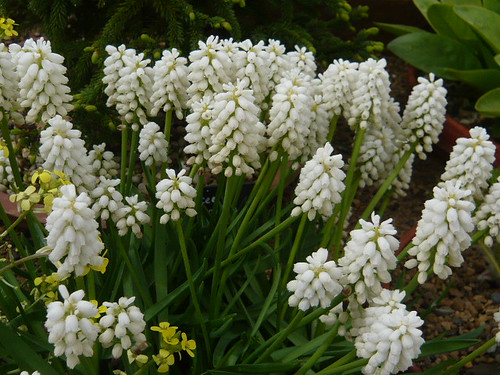
I have not tried Album or Botryoides Album both white Grape or Feather Hyacinths, nor the new scented yellow Golden Fragrance.
